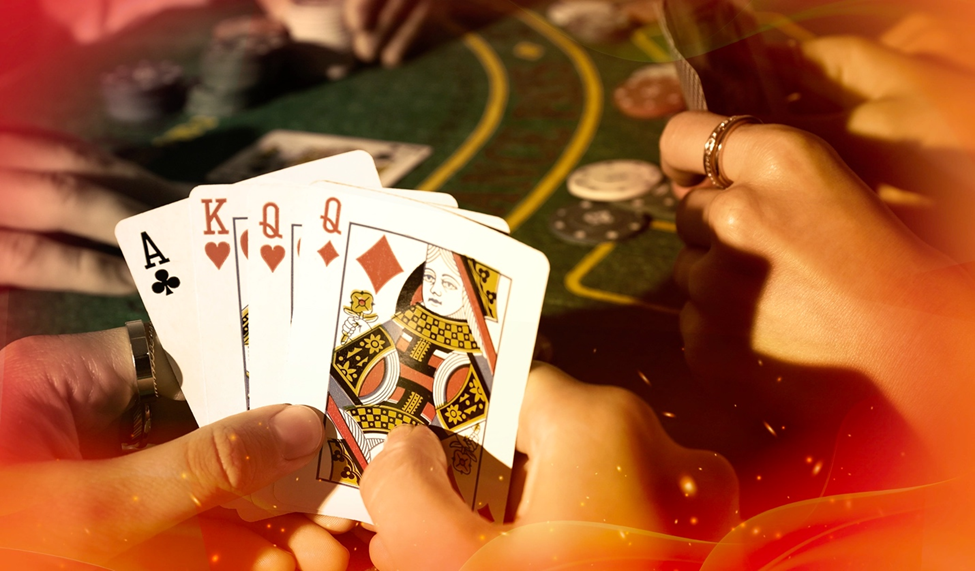
Poker is a game where learning the basics is enough to get you into the trenches and battling opponents. And you might score some wins based on luck and raw talent. But coming out on top consistently, especially against good players, requires advanced poker strategies. You have to exploit opponents’ tendencies, control pots, leverage position to the max, and bring a variety of skills to the table. To help you level up your game, we’ve put together this list of five advanced strategies.
1. Making Opponents’ Tendencies Work Against Them
One of the most effective ways to beat skilled opponents is to identify and exploit their patterns. Even advanced players have habits (whether they want to admit it or not). We all do. We’re only human. By watching how they play, you can figure out how to come out ahead of them.
Example: The Player With Only One Bullet In Their Gun
Consider an opponent who consistently bets aggressively on the flop but generally starts playing tight when they meet resistance. These folks like to come out strong and scoop up pots when they have a bit of momentum. But because flops often miss these players’ starting cards, you can be pretty confident that they are bluffing often. You can exploit this tendency by calling their flop bets and raising on the turn, forcing them to either fold their weaker hands or overcommit with marginal ones.
2. Controlling the Pot with Variable Bet Sizes
Many poker players fall into a routine of using the automatic bet sizing buttons like a reflex. But if you bet pot 99% of the time, people are going to be able to use it against you. You’re going to have much more control over the pot if you vary things more widely, which will also help you manipulate opponents’ decisions and disguise your hand strength.
Some bet sizing techniques
- Polarized Betting. This is when you use dramatically different bet sizes (super small or super large) to make it hard for opponents to read your range. A small bet on a dry board might induce a bluff-raise, while an oversized bet on a wet board forces opponents to think twice about paying to draw.
- Blocking Bets. You know when you hit the river, and you just know that a check is going to induce a big bluff bet from your opponent? A small “blocking bet” can shut this down and keep the pot where it should be.
- Overbetting. In situations where the board heavily favors your range, an overbet both maximizes value and forces folds from medium-strength hands. Make that chip stack work for you.
Example – Taking a Round Off from the Classic Pot Sized Bet.
On a flop of As 7c 3d, you hold AcQd against a tight player in the big blind. Making a small continuation bet here not only keeps weaker aces in the hand but also invites bluff raises from missed broadway combinations like KsJs that might have called your preflop raise. If the turn brings a safe card, you can adjust the bet size upward there to extract maximum value.

3. Position is Everything. Use It to Your Advantage.
Oftentimes, it seems like position matters way more than the cards you’re dealt. It has an insanely large impact on a hand of poker to act last. You get all the information, which in turn allows you to make better decisions. However, advanced players go beyond simply playing more hands in position and use their best spots to constantly dismantle opponents.
A couple of strategies for leveraging position
- Float More Often. Calling bets in position with the intention of taking the pot away on a later round works quite often. It’s especially good against players who overvalue their hands or fail to follow through with their aggression (“Mr. One Bullet” from our example above).
- Apply Pressure. Use your positional advantage to dictate the pace of the game. Continuously betting in position forces opponents to defend more loosely, which often leads to mistakes. It really sucks playing mediocre cards out of position, and this is a major leak for a lot of average poker players.
Example:
You’re on the button with Th9h and face a continuation bet from the cutoff on a flop of KcJs5d. By calling in position, you can represent a wide range of strong hands. If the turn is a low card and your opponent checks, a bet here can force folds from mid-strength holdings like pocket tens or weak kings.
4. How “Balancing” Helps You Stay Unpredictable
Experienced players quickly adapt to opponents who play predictably. To stay ahead, you need to do something called “balancing” your ranges. This is when you play a mix of strong and weak hands in similar ways.
Balancing Preflop Play
Before the flop, avoid always 3-betting strong hands and flat-calling weaker ones. These feel like automatic plays, but they’re just too readable. Include hands like suited connectors or small pairs in your 3-betting range occasionally to keep opponents from knowing how strong a hand you hold.
Postflop Balance
You’ll need to incorporate some bluffs into your betting patterns. For example, on a board like AdQc9s, bet strong hands (like AQ) as well as semi-bluffs (like KsJs). Likewise, if you consistently check-raise only with those glorious trap sets, your hand becomes transparent. Check-raise some strong draws, too, to maintain balance and keep opponents guessing.

5. The Mind Game, Managing Your Table Image, and Spotting Some Tells
Poker is one of the most famous psychological games on Earth. Here are some tips to play the mind game as well as the card game:
Reading Opponents
An immediate bet or check reveals a premeditated action. The opponent knew what they were going to do, almost without regard for the actions of others. This can mean a strong or weak hand, depending on the action and situation. Also, watch for deviations from the norm with bet sizes. An unusually large or small bet is a tell in itself.
Controlling Your Table Image
Your perceived playing style heavily influences how opponents respond to you. Shifting your image can be a powerful weapon. After playing conservatively for several rounds, loosening up can induce folds from opponents who assume you only bet with premium hands. On the flip side, temporarily slowing down your play when you’ve been bullying the table can lure opponents into overcommitting.
Bonus Tip: Staying Ahead in the “Meta Game”
One meta game of poker is how you adapt to opponent adaptations. It’s an ongoing battle. Keep making smart shifts in a timely manner, and you’ll minimize your readability.
Using these tips, you can stay a step ahead, even in the most competitive games. As the great Doyle Brunson once said, “Poker is war. People pretend it’s a game.”


